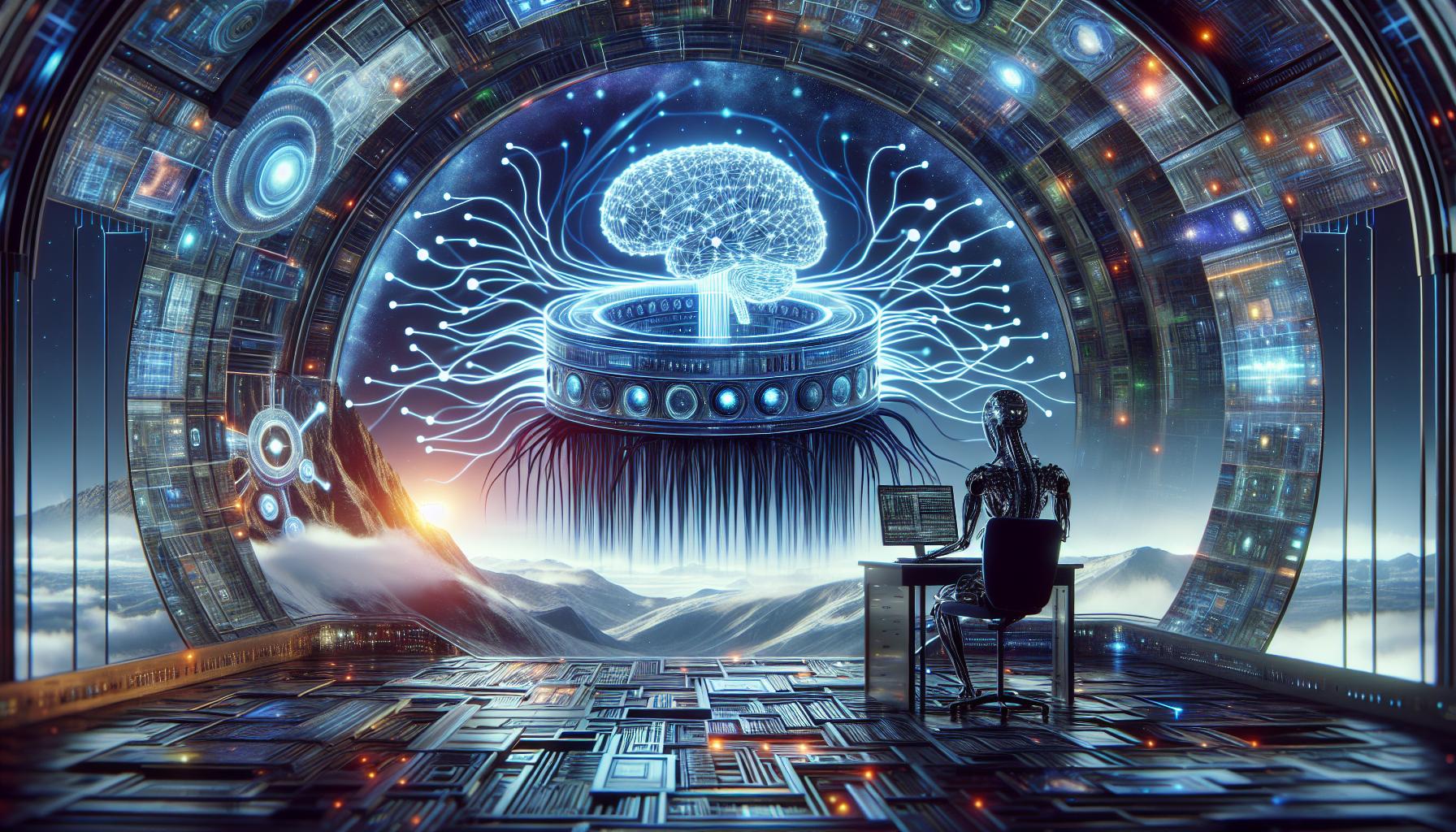Neural Turing Machines: Bridging Memory and AI

Introduction
The field of Artificial Intelligence (AI) has experienced numerous breakthroughs over the years, but the advent of Neural Turing Machines (NTMs) stands out as particularly transformative. By integrating memory mechanisms directly into neural networks, NTMs have created an advanced framework for AI systems. These systems are now capable of learning algorithms and efficiently storing vast amounts of information, setting a new standard for reasoning, problem-solving, and handling complex sequential tasks.
The Genesis of Neural Turing Machines
The concept behind Neural Turing Machines was initially introduced by Alex Graves and his colleagues at DeepMind in 2014. The idea was to combine the capabilities of neural networks with the memory storage and retrieval functionalities of a Turing Machine - a theoretical construct proposed by Alan Turing, which describes a device capable of performing any computation given the right algorithm and adequate time.
Graves' work came as a response to a significant limitation in traditional neural networks: their inability to store and recall long-term information efficiently. While neural networks were proficient at recognizing patterns and making predictions based on this data, they struggled with maintaining memory over extended sequences of data.
Understanding the Architecture
The architecture of a Neural Turing Machine marries two crucial components: a neural network, typically a recurrent neural network (RNN), and an external memory bank that the network can interact with. The neural network functions as the controller, dictating how data moves into and out of the memory bank. The controller determines which pieces of information to read and write, akin to how a Turing Machine operates with its tape.
The memory bank consists of multiple memory slots capable of storing vectors. By employing read and write heads that can move across these slots, the NTM can access and modify the memory contents dynamically. This architecture allows NTMs to handle various tasks that require both pattern recognition and the manipulation of stored data.
Advantages of Memory-Integrated AI
One of the primary benefits of embedding memory within AI systems is the enhanced ability to perform complex sequential tasks. Traditional neural networks, such as Convolutional Neural Networks (CNNs) and standard RNNs, often face challenges when dealing with tasks that require the retention and manipulation of information over long periods.
With NTMs, AI systems can remember previous steps and make informed decisions based on past data. This memory mechanism is critical for tasks like language modeling, where understanding the context of words and sentences over long passages can significantly improve the coherence and relevance of generated text. Similarly, for tasks like solving mathematical problems or navigating through intricate mazes, the ability to recall prior actions enhances the system's capability to find solutions efficiently.
Learning Algorithms and Adaptation
NTMs have demonstrated a remarkable capacity to learn algorithms through their memory integration. Traditional neural networks often require extensive training to perform specific tasks, but NTMs can generalize from fewer examples by leveraging their memory capabilities. For instance, they can learn to sort numbers, copy sequences, or even execute basic programming tasks by understanding and applying the underlying algorithms.
This adaptability is pivotal for applications that demand rapid learning and adaptation. In the field of robotics, for example, NTMs can enable robots to adapt to new environments and learn new tasks quickly. This makes NTMs invaluable for developing versatile and intelligent machines capable of operating in dynamic and unpredictable settings.
NTMs in Problem-Solving and Reasoning
The inclusion of memory in AI systems has significant implications for problem-solving and reasoning. By maintaining a dynamic memory log of past interactions and data points, NTMs enhance the system's ability to plan and strategize. This capability is particularly beneficial for solving complex puzzles, developing game strategies, and even engaging in scientific research where iterative experimentation and adaptation are crucial.
For instance, in the realm of strategic games like chess or Go, NTMs can recall previous game states and apply learned strategies to optimize future moves. This not only improves their performance but also allows them to develop a deep understanding of game mechanics and tactics over time.
The Future of Neural Turing Machines
As AI technology continues to evolve, the role of Neural Turing Machines is likely to expand further. Their potential to revolutionize AI systems by integrating sophisticated memory mechanisms opens up new avenues for innovation across various industries. From enhancing natural language processing (NLP) and automating intricate industrial processes to advancing cognitive robotics and personalized education systems, the applications of NTMs are vast and varied.
However, the development and implementation of NTMs also come with challenges. The complexity of their architecture requires substantial computational resources, and fine-tuning these systems for specific tasks can be intricate. Nevertheless, ongoing research and advancements in computational power are likely to mitigate these challenges, making NTMs more accessible and efficient.
Conclusion
Neural Turing Machines represent a significant leap forward in the integration of memory within AI systems. By combining the principles of traditional Turing machines with the capabilities of neural networks, NTMs offer a powerful framework for learning algorithms, storing information, and excelling at complex sequential tasks. As research and development in this field continue, NTMs are poised to catalyze further advancements in AI technology, driving innovation and expanding the horizons of what intelligent machines can achieve.




